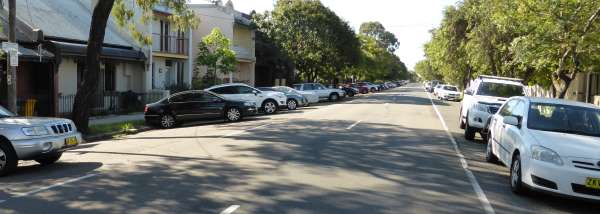A. Yes, if it is a weekend or outside normal working hours (8am-6pm)
A. Yes, if it is a weekend or outside normal working hours (8am-6pm)
B. Yes, if delivering goods
C. Yes, if not obstructing traffic
D. No, not at any time
Parallel parking is where your left-hand wheels are both next to the kerb or edge of the road. On a one-way road you can also park on the right, i.e. your right-side wheels will be next to the kerb. If there are no parking bays marked you must leave at least a metre in front of and behind your vehicle to the next vehicle.
If there are marked bays then centre your car in the bay if possible. Parallel parking bays are a minimum of 6m (in Sydney) and 6.3m if it's an end space. Under normal conditions they are 2.3m wide. On narrow roadways they might only be 2m wide, and if they are designed to also accommodate trucks and buses then they will be 2.6m wide.
Bear in mind a truck or bus can be up to 2.5m wide. An average family car will be 1.8m wide and 4.8m long, but a large ute can be 2m wide and around 5.4m long. With a 6m parallel parking bay, this can make leaving one metre each end more difficult.
Double parking is where you park your vehicle next to a vehicle that is already parallel parked. Double parking obstructs the road way and causes a hazard for other road users. Where there is parallel kerbside parking, you are not allowed to double-park alongside a parked vehicle.
There's a $248 fine for double parking in NSW.
Some new cars will parallel park themselves. The car scans the line of parked cars for a gap that is long enough and then alerts the driver. The driver comes to a stop, puts the car in reverse, applies a bit of throttle and the car will steer itself into the gap. The driver has to brake. The systems are not infallible, but are convenient.
The following image shows angle parking on the left and parallel parking on the right.
